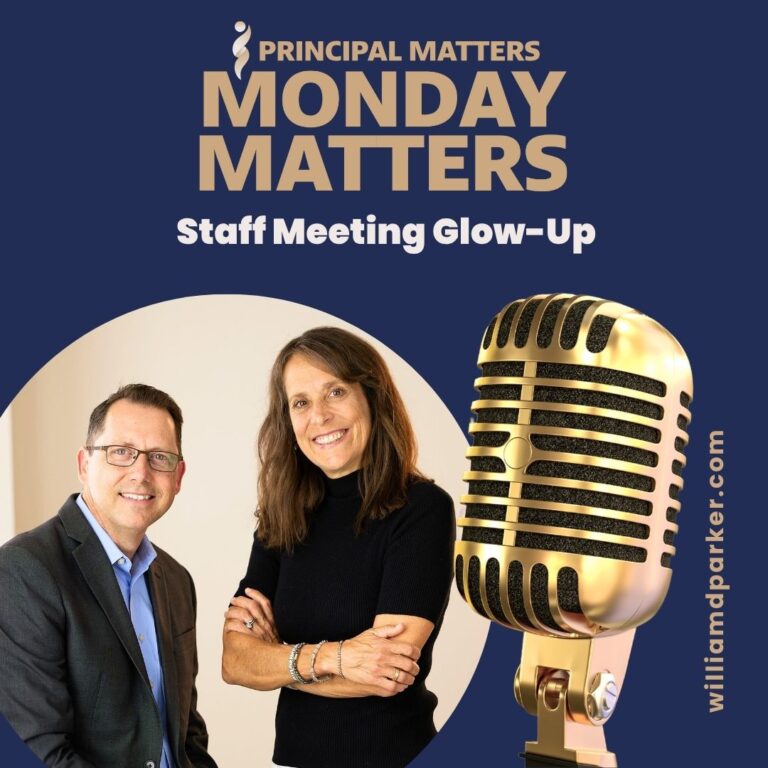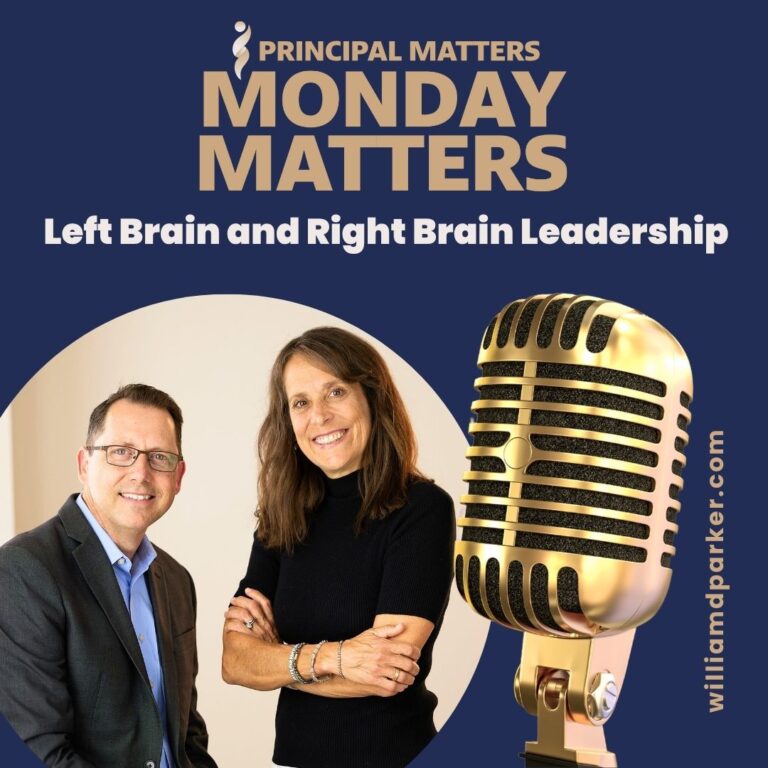Podcast: Play in new window | Download
Just like you, I can think of many reasons to worry about the future or raise concerns about trends that have developed over the past decade.

Whether that includes increases in school shootings, soaring health care costs, rises in the costs of education, the number of children experiencing trauma, growing concerns in climate change or global and domestic political unrest — the list of negatives can be pretty overwhelming and depressing.
At the same time, as important as it is to confront the harsh realities of the world with possible solutions, I want to keep the dangers of this world in perspective with the amazing achievements of this last decade. As we draw 2019 to a close and officially end the 2010’s, I’d like to pause for a moment and celebrate 10 remarkable changes that have taken place in our world – and the lives of those whom we educate:
1. Technology has connected more of the world.
Although Facebook began as a clunky social media website for Harvard students in 2004, and the first iPhone was introduced to the world in 2007, these technologies have only exponentially grown during the past decade. Pew Research estimates that 5 billion people around the world now have access to a cell phone.
With the world’s population estimated at 7.7 billion, consider the implications of 65% of the world connected through technology. Never before have more people had the opportunity to interact, discover, and influence others with such speed and accessibility.
2. Access to information has increased learning potential.
Just as the printing press revolutionized the modern world during the 15th century, we have opened new territories of learning with access to information in the past ten years. Khan Academy, which began in 2008, for instance, has now become a staple for young people around the world who need immediate examples of lessons and examples in most major subject areas of school.
In addition, self-starters use YouTube for example, to access lessons or tutorials everything from repairing plumbing to installing camera systems. Since its start in 2005, YouTube’s first video to ever hit a billion downloads happened in 2011. This has also been a game-changer for education as schools have introduced blended learning options, 1-1 devices, and more virtual options for student learning. In many ways this has flipped the roles of educators from experts in conveying information to facilitating and guiding students in how to interpret information.
3. Innovation has changed the job market and our work.
According to Alice Murray from Jobbio.com, new jobs during the past ten years now include App developers, Uber drivers, social media managers, user-experience designers, Airbnb hosts, drone operators, data scientists, genetic counselors and anything involving cryptocurrency.
For many people, this past decade has also made it easier to work remotely or find jobs that match specific skills. In addition, this flexibility has forced some companies to recognize the importance of improving job culture in order to retain workers. As we for future jobs, it is important to remember many of those titles don’t even exist yet. So a focus on problem solving skills, critical thinking skills and people-skills is as important as ever.
4. Advances in medicine are saving lives.
Improvements in medicine and health outcomes have meant a reduction in smoking-related diseases, fewer people dying of HIV, better treatments for cancer, and more precise solutions for injuries, including reconstructive surgeries and bionic limbs.
Although we still have a long way to go to prevent diseases, modern medicine continues to improve possibilities for our collective futures. Even with the ever-growing costs of health care, it is important to recognize that longevity and quality of life have continued high in the modern world with the average life-span of a U.S. citizen now being around 78 years old.
5. Food production is at an all time high.
Yes, world hunger is still a problem, but it is also noteworthy that according to the Food and Agricultural Organization of the United Nations, projections for wheat and corn productions are heading toward an all-time high in 2019.
Global climate changes and population growth still continue to create challenges in feeding many regions of the world, but the problem does not appear to be supply as much as it does prioritizing access and delivery to countries in need. Food insecurity is a real-problem for many people, but the ability to produce food for a growing world population is still encouraging.
6. Ease in navigating travel has opened to world to cultural cross-pollination.
According to travel blogger Lucy Dodsworth, many travel agencies have been replaced by self-scheduling, low-cost airlines have made pricing more competitive and affordable, staying in-touch has become easier with advances in technology, the ability to continue working while traveling has been made more convenient, it has become easier to photograph and record travel with advances in phones, and experiences with exotic foods are now brought closer to home in U.S. cities.
On a personal note, who would have ever thought my own Oklahoma neighborhood would now host a Mexican Grocery, a Ding Tea shop, and a restaurant for Vietnamese Pho?
7. The advent of podcasting has changed the way we access content.
A phenomenon that researchers began tracking in 2006, podcasting has increased dramatically this decade. Estimates show that more than half the U.S. population has listened to at least one podcast episode, up from just one in four a year ago.
Even in my own forway into podcasting, I’ve been surprised that I’ve been able to connect with so many educators across the country and the world. With just 176 episodes shared, Principal Matters podcast has had 341,560 unique downloads at the time of this post!
8. Growth of Netflix and online streaming are changing entertainment.
Since 2010, Netflix subscribers have grown from 20.01 million to over 158 million subscribers in 2019. Access to online streaming services have changed the ways we seek entertainment, play video games, and listen to music. With the advent of Echo and Alexa in 2014, even children can now listen to music by voice command. People still go to theaters, but that is becoming optional with the growth of online streaming. So many of these technologies are possible because of increases in internet and WiFi services.
9. Ease of digital tools has changed our work and life patterns.
During this decade, we have seen increases in online banking, online retail, video-streaming, self check-out options, and digital applications for almost any product, including food deliveries like DoorDash, GrubHub, and UberEats. In addition, online tools make it possible for anyone to own a website, create advertising, market products, or design. Much of what we purchase, consume, read, listen or watch is literally available at our fingertips. Even cleaning is easier with products like iRobot’s Roomba, which will automatically vacuum floors and recharge itself. Although social scientists are still uncovering the many pitfalls with the ease of digital access, this decade has given new meaning to the idea of convenience for work, play and life.
10. Young people are changing the conversations that drive practices and policies.
Malala Yousafzai promoted education for girls during Taliban attacks on her village, and was seventeen years old when she became the 2014 Nobel Peace Prize winner. Youth movements like March for our Lives are changing the conversations we have about gun violence across the U.S. And youth activists have influenced world events from the Middle East to Hong Kong. It is fitting that this year’s 2019 Time Magazine Person of the Year, is a teenager and global climate activist, Greta Thunberg.
Although our youth may live in a world that is more stressed, more anxious, and more complicated than ever before, we should be able to celebrate the ways many they are shaping their futures with optimism and creativity.
Let’s Wrap This Up
It is easy to see why change has become a common part of the modern experience. At the same time, how do we lead our school communities during these changing times? One of my favorite leadership authors, Dr. Tim Elmore, says that we must stay committed to the timeless truths that always apply to life while also adapting to the timely ways others learn and grow.
Instead of being overwhelmed by the fast-paced world we live in, let’s celebrate the positives and focus on ways we can harness these tools to better prepare our students for the next decade.
Now It’s Your Turn
What ways have the developments of the past ten years improved or enhanced your abilities and service as a school leader? How can you prepare your students for opportunities that may not yet exist? As you think about the decade ahead, I’d also like to recommend Dr. Elmore’s newest book, co-authored with Andrew McPeak: Generation Z Unfiltered: Facing Nine Hidden Challenges of the Most Anxious Population. Let’s look at our students and future with optimism as we think about ways to leverage changes and equip our school communities for the 2020’s.
Sign-Up For Free Updates and Ebook
You can automatically receive my newest posts and a free Ebook, 8 Hats: Essential Roles for School Leaders. Let’s keep learning together!




